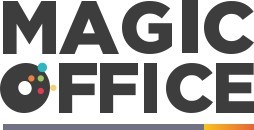
Understanding Cost Savings Benchmarks
Establishing a Strong Foundation for Cost Savings
Achieving effective cost savings in UK companies requires a comprehensive understanding of cost-saving benchmarks. To start, organizations need to benchmark their expenses against industry standards. This comparison helps in identifying possible gaps and developing targeted strategies for cost avoidance and cost optimization. Furthermore, understanding your financial position is crucial. Regular data analysis and tracking play a vital role in identifying patterns where companies can reduce costs. Dashboards that provide real-time insights can significantly aid in monitoring and improving cash flow. Companies with effective data systems can pinpoint where savings opportunities lie and help set achievable targets. Procurement teams, in particular, have unique opportunities to contribute to cost-saving initiatives. By focusing on procurement cost and optimizing the supply chain, these teams can positively impact the bottom line and increase efficiency.
Ensuring supplier performance accountability is another critical element. Long-term relationships with reliable suppliers can lead to early payment terms, resulting in significant financial savings for the organization. Tailored approaches based on these benchmarks can help businesses make decision-making more informed and strategic, ensuring cost reduction remains a key focus.
For companies striving to enhance their financial decision-making process, engaging seasoned financial experts like an interim CFO can be an effective strategy. These experts bring invaluable insights that help companies set realistic benchmarks, laying down a path for financial successes in the long term.
Identifying Key Areas for Cost Reduction
Pinpointing Vital Opportunities for Reducing Expenditures
For UK companies striving to enhance their financial standing, identifying key areas to reduce expenses is crucial. A comprehensive understanding of current spending patterns forms the bedrock of any cost-saving initiative. By scrutinizing expense reports and utilizing data analytics, organizations can illuminate areas ripe for cost optimization.
Engaging procurement teams effectively maximizes savings opportunities. These teams play a pivotal role in managing procurement costs by negotiating favorable contracts and optimizing supplier performance. Moreover, leveraging long-term supplier relationships can provide added financial benefits such as cost avoidance and reduced supplier-associated risk.
Supply chain management also presents fertile ground for cost reduction. Streamlining processes to enhance efficiency not only cuts down on redundant costs but also fosters an agile, responsive supply chain capable of adapting to market volatility. Continuous improvement in this area ensures sustained savings and boosts overall organizational health.
While reducing costs is pivotal, organizations must simultaneously ensure quality and operational efficiency are maintained. Achieving this balance requires strategic decision-making backed by real-time data, driving informed actions that complement broader business objectives. Harnessing these insights supports enhanced cash flow management, optimizing short- and long-term expense strategies.
Implementing Cost-Saving Strategies
Strategies for Cost Management
Implementing cost-saving strategies effectively is critical for UK companies seeking to optimize their financial management. The first step is to focus on procurement processes. By enhancing procurement efficiency, companies can significantly reduce procurement costs and maximize savings. This involves negotiating better terms with suppliers and improving supplier performance through regular evaluations.
Additionally, data plays a crucial role in identifying savings opportunities. Companies should utilize real-time data analysis for informed decision making, which helps in avoiding unnecessary expenses and optimizing cost allocation. Benchmarking against industry standards can also provide insights into potential areas for cost reduction.
Another strategy is the implementation of early payment discounts. By managing cash flow effectively, businesses can negotiate early payment terms with suppliers, resulting in substantial cost savings. To achieve long-term financial stability, it may also be beneficial to focus on cost avoidance strategies, which proactively address potential expenses before they occur.
Successful cost management not only involves cutting expenses but also investing in technology and innovation to enhance productivity and efficiency. This holistic approach supports sustainable cost savings and ensures the organization remains competitive in the market.
For further insights into improving office efficiency and achieving cost savings, consider exploring our detailed discussion on enhancing office management practices.
Monitoring and Evaluating Cost Savings
Tracking and Analyzing Cost Savings
Once cost-saving strategies are implemented, it is crucial for UK companies to track and analyze the outcomes effectively. This ensures that the efforts lead to tangible financial benefits and align with the organization’s long-term goals. Monitoring involves regular data collection and analysis to understand the impact on cash flow and overall financial health.
Utilizing Real-Time Data
Real-time data is invaluable in assessing the effectiveness of cost reduction strategies. By leveraging technology, businesses can gain insights into procurement costs, supplier performance, and overall spend. This data-driven approach allows for timely decision-making and helps in identifying further savings opportunities.
Benchmarking for Continuous Improvement
Benchmarking against industry standards and competitors can provide a clear picture of where a company stands in terms of cost efficiency. It helps in identifying areas where the organization can reduce costs further and improve procurement processes. Regular benchmarking ensures that the company remains competitive and continues to achieve cost savings.
Engaging Procurement Teams
Procurement teams play a vital role in monitoring cost savings. By maintaining strong relationships with suppliers and negotiating better terms, they can significantly reduce expenses. Early payment discounts and strategic supplier management are effective ways to enhance savings and optimize the supply chain.
Evaluating Financial Impact
Regular evaluation of the financial impact of cost-saving measures is essential. This involves assessing whether the strategies have led to a reduction in expenses and improved cash flow. Companies should also consider cost avoidance tactics to prevent unnecessary spend in the future. This comprehensive evaluation helps in refining strategies and achieving long-term financial stability.
Overcoming Challenges in Cost Management
Addressing Cost Management Challenges
In the quest to achieve cost optimization, UK companies often face various challenges that require strategic handling. Recognizing these hurdles is crucial to harnessing effective cost savings throughout the organization.
Data Management and Analysis: The ability to manage and interpret data efficiently is a key factor in overcoming cost management challenges. Accurate data analysis not only supports informed decision making but also helps identify potential cost saving strategies and savings opportunities that can be implemented in real time. Organizations should invest in data management tools to track expenses, procurement costs, and supplier performance effectively.
Supplier Relationships and Procurement Costs: Building strong relationships with suppliers is essential in negotiating better procurement terms. Procurement teams need to ensure that supplier performance aligns with the company’s cost reduction goals. This may involve negotiating early payment discounts or implementing cost avoidance strategies to ensure long term savings.
Achieving Organization-wide Efficiency: Costs savings are not confined to a single department but span across the entire business. By fostering a culture that prioritizes efficiency, companies can reduce costs and enhance overall performance. Benchmarking and continuous monitoring of cost savings initiatives ensure that savings opportunities are maximized and financial goals are achieved.
As part of an integrated approach, companies must focus on addressing these common hurdles to ensure that cost management efforts lead to measurable and sustainable cost savings, enhancing cash flow and optimizing operational expenses.













